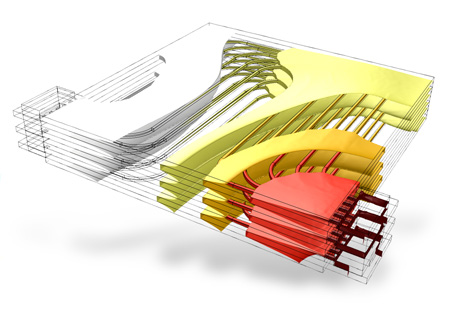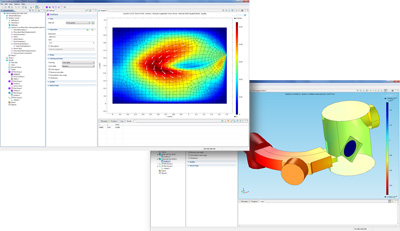Updated Multiphysics Software Features New Applications in Microfluids, Geomechanics, and Electrodeposition
COMSOL, Inc., has announced the release of the latest version of COMSOL Multiphysics, its award-winning simulation environment. Version 4.2, which expands the scope of applications covered by COMSOL, is now available and will be shipped to all customers with current subscriptions.

"The vision behind Version 4 was to provide a foundation for our customers to reach broader audiences," says Svante Littmarck, President and CEO of COMSOL. "The implication, and what we're delivering with 4.2, is an expanded product offering based on that platform."
Version 4.2 expands the applications covered by COMSOL with three new application modules - Microfluidics, Geomechanics, and Electrodeposition - and new LiveLink interfaces for AutoCAD(R) and SpaceClaim(R).
"This release really bolsters our offerings to meet market demands in several directions," says Littmarck. "Mechanical, electromagnetic, chemical, fluid, and CAD interoperability are all covered in this release. Even areas not explicitly addressed will benefit from the improved solver technology."
"The list of features included in Version 4.2 is indeed impressive", adds Littmarck. "By any measure, this is a major release. General geometry and meshing, solvers, postprocessing, and, as COMSOL's customers have come to expect, user interface enhancements have all been upgraded. These new capabilities reach all products throughout the COMSOL environment, both existing and new."
Core Multiphysics Capabilities Accelerate Simulation Performance
Central to this release are the core development initiatives undertaken by COMSOL. The result is improved and expanded multiphysics simulation performance for all users. New capabilities target geometry, mesh, and solver functionality. The impact is primarily on what is already a strength of COMSOL: speed.

Version 4.2 includes new virtual geometry tools for creating a mesh that identifies the essential parts of the original CAD model to enable faster and more memory efficient solving. Time-dependent adaptive meshing and automatic remeshing tightly link solvers and meshing algorithms for any moving mesh analysis. Models with moving diffusion fronts are solved more efficiently as are simulations involving removal and deposition of materials.
Updated Model Builder Brings New Convenience Tools to the Modeling Desktop
In Version 4.2, COMSOL has responded to customers requests with a new Report Generator for publishing results data. For a given model, this integrated, customizable tool lets users create data rich HTML reports of varying degrees of detail, from brief to complete. Several reports can be added to a single model, enabling users to communicate all their important data in a well-organized, easy-to-read format.
CAD interoperability
CAD interoperability has always been important to COMSOL users, and this core aspect of simulation has been expanded significantly in Version 4.2. The LiveLink for SolidWorks(R) interface has been extended with a One Window Interface where a SolidWorks user can stay inside of the SolidWorks environment and work synchronously with COMSOL Multiphysics. The new LiveLink for SpaceClaim interface fuses direct modeling and multiphysics simulation in a tightly integrated environment. Similarly, with the new LiveLink for AutoCAD users can transfer a 3D geometry from AutoCAD to COMSOL Multiphysics. For both products, the synchronized geometry in the COMSOL model stays associative with the CAD geometry in its native format. This means that settings applied to the geometry, such as physics or mesh settings, are retained after subsequent synchronizations. The LiveLink interface is also bidirectional, allowing users to initiate a change of the CAD geometry from the COMSOL model.
Want more information? Click below.